
A Full Guide On How To Grow Bulbs Indoors
Published: 05/12/2022 | Updated: 07/04/2023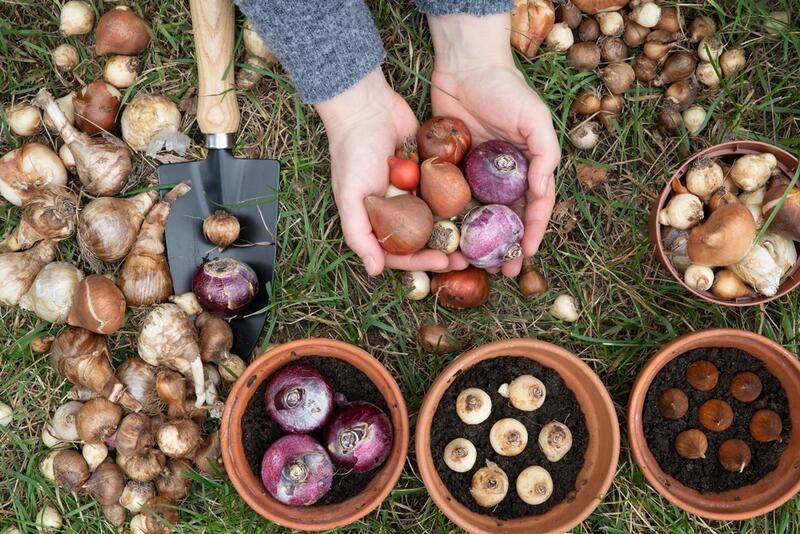
Grow bulbs indoors? Yes, it’s possible and there are many reasons why you should.


Whether you're a beginner or an expert gardener, I'm sure you've seen the stunning flowers that spring-flowering bulbs can produce.
The stunning blooms of daffodils, hyacinths, and other bulbs are perfect for adding color to your home and garden.
In this guide, ShrubHub's plant experts will teach you everything there is to know about growing bulbs in containers indoors.
We'll also tell you what types of flowers work best indoors and how to grow them successfully inside.
Planting Bulbs Indoors
Bulbs are plants that produce a corm, or a short, underground stem that develops into the plant's new growth. They're classified based on how they grow.
Corms are bulbs that begin growing by pushing their new stems up through the ground.
Once they've reached the surface of the soil, these leaves unfurl and begin to photosynthesize sunlight into food for themselves and their roots (which also grow from these bulbs).
Some popular types of corms include amaryllis, hyacinths, paperwhites (daffodils), tulips, and others.
While rhizomes and tubers look similar to corms, they're long underground stems with buds at each end. They don't develop into full leaves. Instead, they have buds that only appear when temperatures warm up in spring after going dormant over winter months.
Tubers also go dormant during cold weather, when the ground freezes, but have short vertical roots rather than horizontal ones like rhizomes do.
Other kinds of indoor bulbs include gladiolus bulbs—also called sword lily flowers—and tuberous begonias (Begonia) which can be grown indoors year-round.

Popular Bulb Flowers To Grow
With so many bulbs to choose from, it can be hard to narrow down which ones to grow indoors.
If you're looking for easy-to-grow, low-maintenance spring bulbs that give off a lot of colors, these are some of the best bulb flowers to grow indoors:
-
Tulips
-
Daffodils
-
Amaryllis
-
Hyacinths
-
Lilly
-
Paperwhites
-
Gladiolus
-
Freesia
-
Dahlia
In this guide, we'll focus on Amaryllis, Hyacinths, Paperwhites, and Tulips.

Planting Amaryllis Spring Bulbs Indoors
Amaryllis are tender bulbs that grow best in zones 8-11. Freshly planted bulbs need a minimum of 10 hours of sunlight each day and prefer to be planted 6 inches deep in potting soil that drains well and has plenty of organic material.
Amaryllis are perfect as indoor plants if they are given the right conditions. Those include a south-facing window with an eastern, or western exposure, warm soil temperatures, and good drainage.
They need at least six hours of direct sunlight every day to bloom properly, so make sure you have enough light for them before planting these bulbs!
The Best Growth Conditions For Amaryllis
The growing season for these spring bulbs is in late summer. Amaryllis bulbs need to be deeply rooted at least nine weeks before the first frost.
Plant these flowering plants with pointed ends. As the shoots emerge from the soil, they will form a bud on top of each one, which you should cut off once it blooms to encourage new growth.
Keep in mind these growth conditions:
-
Need full sun.
-
Need well-drained soil.
-
Require winter dormancy periods.
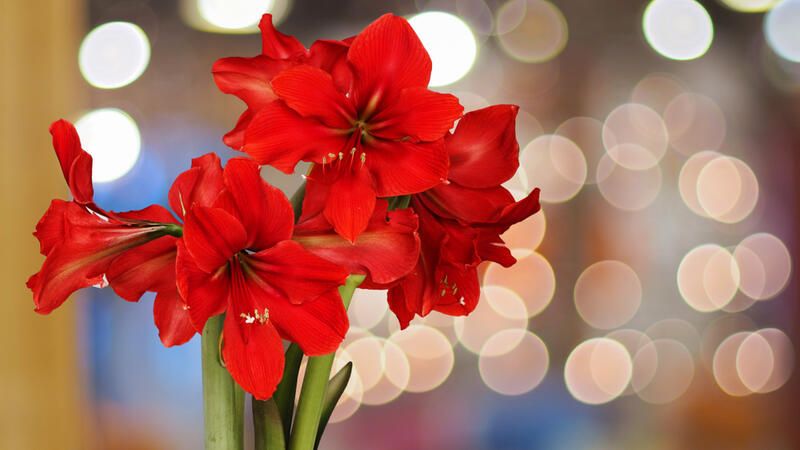
Planting Hyacinths Spring Bulbs Indoors
Hyacinths are hardy bulbs in zones 5-9. Hyacinths should be planted in the spring when the soil temperature is above 50 degrees Fahrenheit, preferably after all danger of frost has passed.
They're summer flowering bulbs and do best in full sun or partial shade.
They can be planted at a depth of 6 inches with the top 2 inches covered with mulch.
The Best Growth Conditions For Hyacinths
The best time to plant bulbs is in the late spring or fall, as they will have time to grow roots before winter arrives.
This also gives you a head start on the next season's bloom! Hyacinths are summer bulbs which means they thrive in warm climates.
These summer bulbs should be planted strictly in the fall as these bulbs require cold temperatures (below 40°F) for successful blooming.
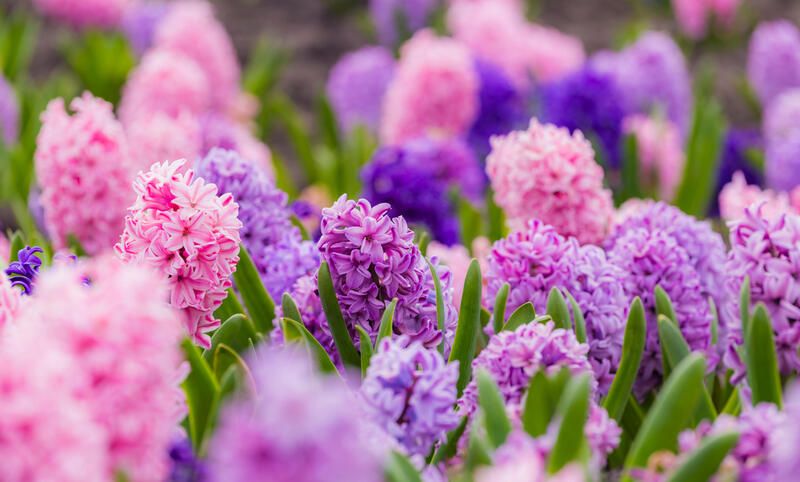
Planting Paperwhites Spring Bulbs Indoors
You may have heard the term "paperwhite" used to describe a type of narcissus. Paperwhites are one of the easiest bulbs to grow indoors because they bloom in 6-8 weeks and require little maintenance.
Paperwhites can be kept in cool temperatures (50-60 degrees Fahrenheit) with indirect sunlight throughout their blooming period.
The ideal temperature for paperwhites is 55 degrees Fahrenheit, but they'll still grow if kept at cooler temperatures.
The Best Growth Conditions For Paperwhites
The best time to plant paperwhites is in the fall, after the first frost. This will help your bulbs store energy for next year's blooms.
Pick a sunny spot to plant paperwhites. Your pot should be placed in an area with bright indirect sunlight but no direct sunlight on it during the day—this means that you don't want to put it where there are windows or mirrors.
It's also helpful if these pots get some morning sun because this will help trigger germination at a faster rate.
Paperwhites like cool temperatures, so keep them in a cool, dark place.
Here are some tips to grow these bulbs immediately:
-
In the spring, put your bulbs in a pot with a drainage hole and fill it with soil or compost.
-
Water once every two weeks to keep the soil moist but not soggy.
-
The bulbs may sprout roots before winter if conditions are ideal, but don't worry if they don't—they'll still grow when the weather warms up.
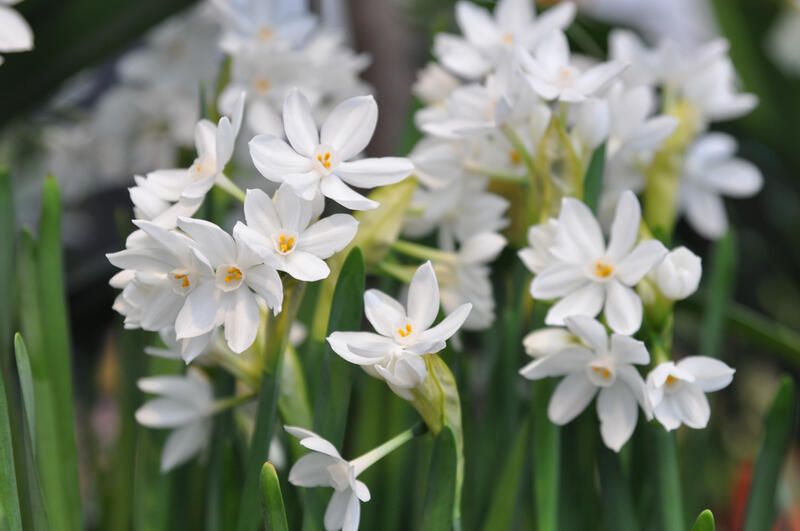
Planting Tulips Spring Bulbs Indoors
Tulips are one of the most popular bulbs to grow indoors. They come in an array of colors and shapes and have a short blooming period (typically about one month).
You'll probably want to plant tulip bulbs every couple of years because they only last for about 10 years before going dormant.
The good news is that tulips are fairly easy crops; they need full sun and moist soil with plenty of drainages.
Tulips are hardy to zone 3, which means they should be planted in the fall, after the last frost of the season.
The Best Growth Conditions For Tulips
Tulips are relatively easy to grow, but they do have some specific requirements. You can plant tulips in full sun and well-drained soil that's rich in organic matter.
Water them deeply once a week during dry spells, then let the soil dry out between watering for optimal root growth. And remember that wet soil will make the roots rot.
Keep an eye on your bulbs' color as they develop—if it starts to fade, there could be something wrong with the soil or location.
Once the flowers die back, cut off the stems at ground level and leave them alone until spring. If your tulips are growing well, expect them to bloom in early spring.
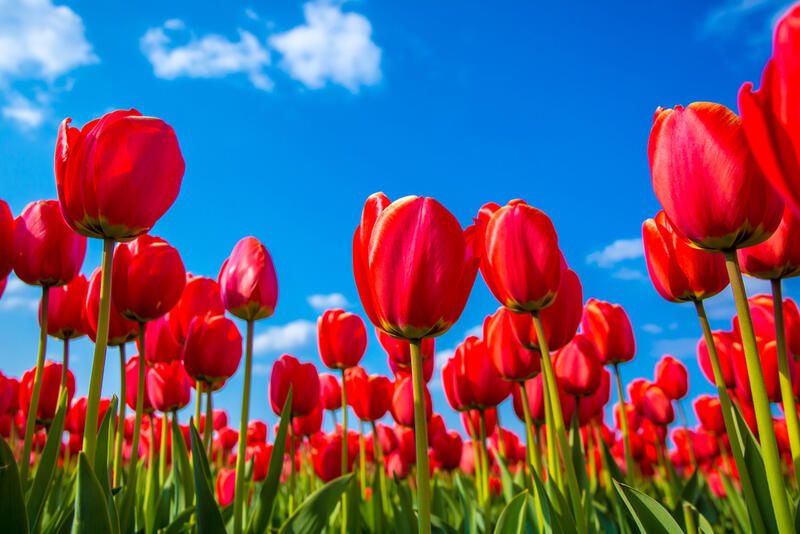
Caring For Spring Flowering Bulbs
Now that you know how to plant bulbs, it's important to care for them properly.
Here are some tips to help you care for spring-blooming bulbs:
-
Remove dead leaves, cut back stems, and remove any damaged bulbs as soon as possible.
-
Keep the soil evenly moist until shoots appear in spring but don't overwater your plants; the bulb may rot if you do so in winter! (Bulbs like to be watered from the bottom.)
-
Plant in a sunny spot that's protected from frost and cold temperatures during winter—you want your bulbs to sprout before early spring arrives!
What do I do after the blooms fade?
Once your bulbs are done blooming, remove the flowers to prevent seed formation. Allow the bulb foliage to die back naturally and then let the bulb rest in the ground until spring.
In early spring, cut off the foliage after it turns yellow or brown and dies. You may also want to dig up your bulbs if they are large enough so that you can replant them in a bigger pot.
If you're interested in storing bulbs, gently brush off any remaining soil from around each plant before placing them in a bag with some dry peat moss or sand. You can then store this bag in an airy place until the next growing season when you'll be ready to replant again.

Lastly,
If you follow these tips and take care of your bulbs, you’ll be able to grow some amazing flowers and enjoy them all year long.
I hope this guide was helpful and as always if you have any questions or concerns, don't hesitate to contact ShrubHub's plant experts!
Check out our yard design services today to get 70% off of your first order!


